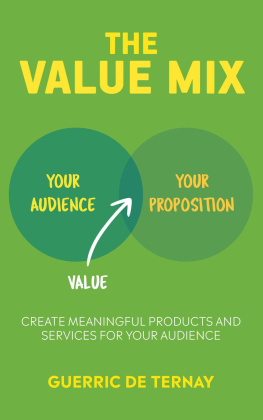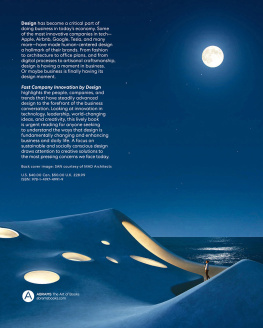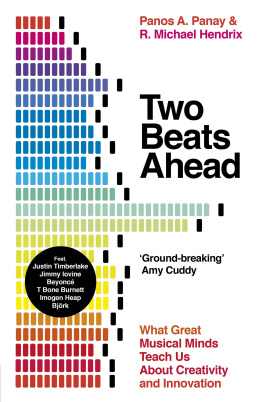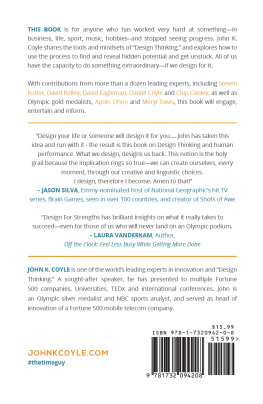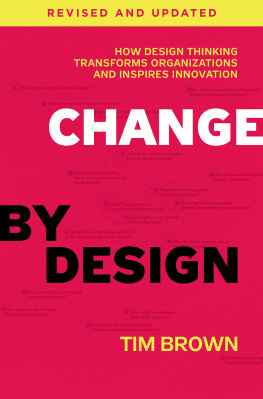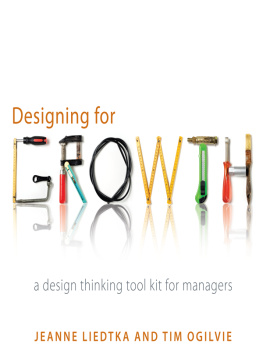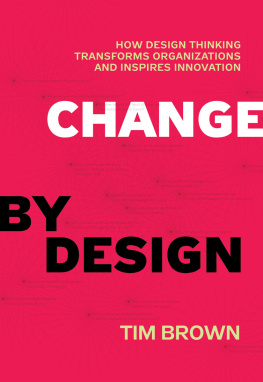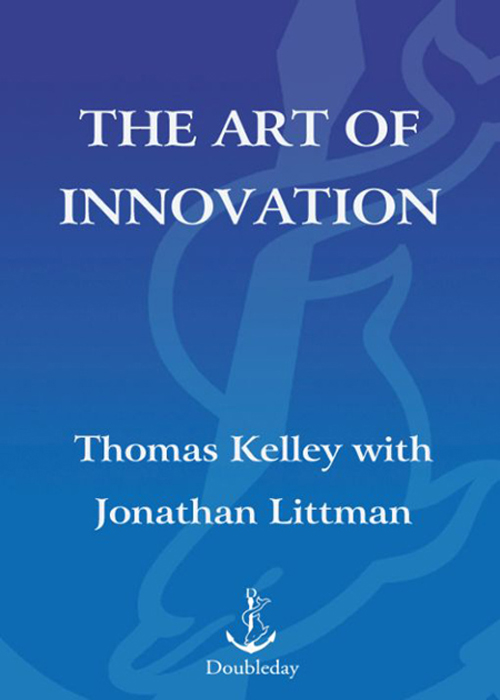
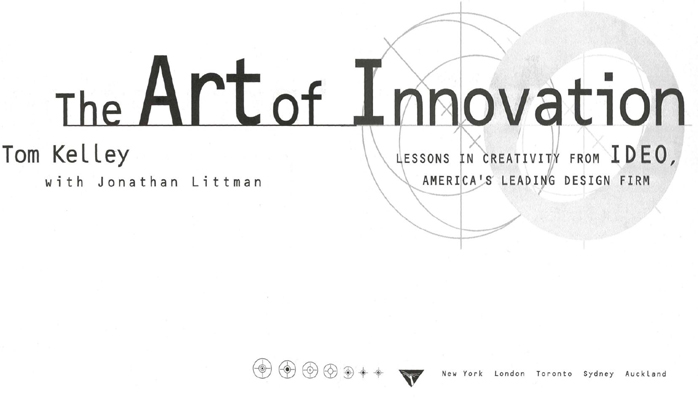
Table of Contents
To my brother David,
who has been a roommate,
mentor, partner, boss,
and best friend.
Without him,
this book
would not
exist.
ACKNOWLEDGMENTS
If it takes a village to raise a child, then creating a book seems to require at least a small metropolis. Like many of the innovation programs described inside, the book was very much a team effort. Although Jonathan and I get to put our names on the front cover, literally dozens of people have contributed to the final product. I wont try to name them alllike some Oscar Awards speech gone haywirebut several people made such significant contributions that I feel compelled to single them out.
First, literary agent Richard Abate at ICM was the catalyst that got the book idea started in the first place and helped appreciably throughout. In the first few weeks, author Bill Barich also helped significantly to focus and articulate our random thoughts into an actual project.
During the long months of writing and research, there were three people who were a steady source of both practical and emotional support for the project. Stanford PhD candidate Siobhan OMahoney was both clever and persistent in pursuit of information and supporting evidence. Scott Underwood, who loves words more than anyone I know, helped clarify facts and the nuance of language to describe them. And Joani Ichiki helped make order out of chaos, working patiently through our jumbled combination of e-mails, handwritten edits, and scribbled Post-it notes.
Just when the text was nearing completion came the surprisingly complex task of shooting, gathering, and organizing the images that appear in the final book. Lynn Winter was nearly superhuman in her energy and persistence on that part of the project, allowing me to focus on the written word. Photographers Joe Watson and Steve Moeder shot lots of original photography and IDEOs graphic designer Stephanie Lee helped create some of the composite images. (My kids insist that I reassure you, no mice were harmed in the elephant photo shoot, as far as we know.)
There were others who helped significantly throughout the process. Whitney Mortimer played a nearly continuous role as a source of business judgment, resource access, and practical advice. Roger Scholl at Doubleday was kind enough to leave us alone during the development of the first manuscript and firm enough to keep us on track as the publication date grew near. IDEO CFO Dave Strong, who sits across the aisle from me, generously looked the other way on days and weeks when writing and revisions seriously impacted my day job as the firms general manager.
I want to especially thank all the people at IDEO, who have shared their time and their ideas. They were always willing to tell me their favorite stories, answer my e-mail queries, and even hold brainstormers on book-related topics. The list of IDEO contributors here is too long to mention, but you know who you are.
Jonathan Littman, my coauthor, not only shouldered most of the heavy lifting during creation of the first manuscript, but also taught me a lot about writing in the process. I gained new respect for his profession and am anxious to see his future works.
As for my brother David, the dedication does not begin to tell the story. He wasand isa major influence in my life, and I have never taken for granted the lucky accident of birth that made me his brother. Most of the principles underlying this book came directly or indirectly from David and the work practices he created at IDEO.
To all the rest of my family, thanks for the support, stamina, and love during this long and intense project. My wife Yumi did more than her share of the parenting in the last year, and my two enthusiastic-but-patient kids got good at starting sentences with the phrase "After the book is done, do you think we could....?" As you read this text, I am off with them somewhere, making up for lost time.
FOREWORD
It was 1990. I had been a consultant and management lecturer for over fifteen years. Probably hung out in three or four hundred companies. But ... this one was different.
Just six blocks from my Palo Alto office, Id never visited it. And now, following a half-day tour, I recall clearly bouncing in the front door of our office and saying to our receptionist, the first person I encountered, "Its finally happened. Ive seen a company where I can imagine working!" (In retrospect, I guess that was a frightening thing to say to her.)
The company in question was IDEO (actually, at the time, David Kelley Design). And Id been bowled over by the spirit and sense of playfulness that invaded every aspect of its stellarwildly creative work.
I hope Im not generally a braggart, but in this instance I claim some precedence. I think I was the first of the "gurus" to latch on to IDEO as Exhibit A in the folder marked "innovation machines."
That was then, and in the subsequent ten-plus years, innovation has spurted to the tippy top of the "requisite core competence list" for companies of all shapes and sizes. And still, nobody does it better than IDEO.
But how? Fat chance of finding out, as IDEOs finely-tuned methodology is obviously its best kept secret.
Until now.
Enter ... THE ART OF INNOVATION
Tom Kelley, IDEO exec and David Kelleys brother, tells all!
This is a marvelous book. It carefully walks us through each stage of the IDEO innovation processfrom creating hot teams (IDEO is perpetually on "broil") to learning to see through the customers eyes (forget focus groups!) and brainstorming (trust me, nobody but nobody does it better than IDEO) to rapid prototyping (and nobody, but nobody, does it better...).
But this is no drab and dreary academic tour. Hey, IDEO creates very cool "stuff" of all sorts. And the case studiesfrom grocery carts to toothpaste tubes, electronic doodads to obscure medical devicesbreathe life into practically every page of the book.
In recent years, as the L.O.I. (Legend of IDEO) has spread far and wide, the company has had clients begging for advice not just on a product or two, but on the IDEO way of innovating. It has responded vigorously. Thats good news for readers. It means this methodology not only works for IDEO, but has proven to be transferable.
Its not quite that simple, of course. Beneath the IDEO method lies the incredible, throbbing IDEO spirit that led me to love at first sight. No, it wont be "1, 2, 3 ... Im an innovator now." Nonetheless, I can imagine no better launching point than the pages, ideas, and cases of this book. I have been waiting ten years for it. And now Im lucky enough to own a thoroughly highlighted copy of the galleys ... that I will barely let out of my sight.
Innovation is it, for the foreseeable future. And The Art of Innovation is it for those with the nerve to take the plunge.
So ... on with the show!
Tom Peters
Buenos Aires
October 9, 2000
INNOVATION AT THE TOP
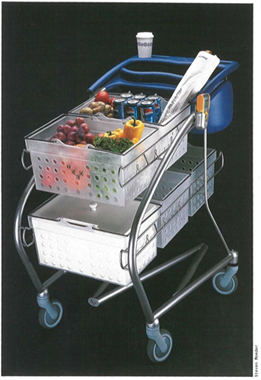
Innovation wasnt always a hot topic in the Silicon Valley. More than a decade ago, when our firm was just a small group of product designers working over a dress shop in Palo Alto, we became very interested in why companies looked outside for product development. We hired a professional services firm to help answer that question, and after interviewing many clients (and nonclients) we distilled the answers down into four key reasons: One was just raw
Next page

